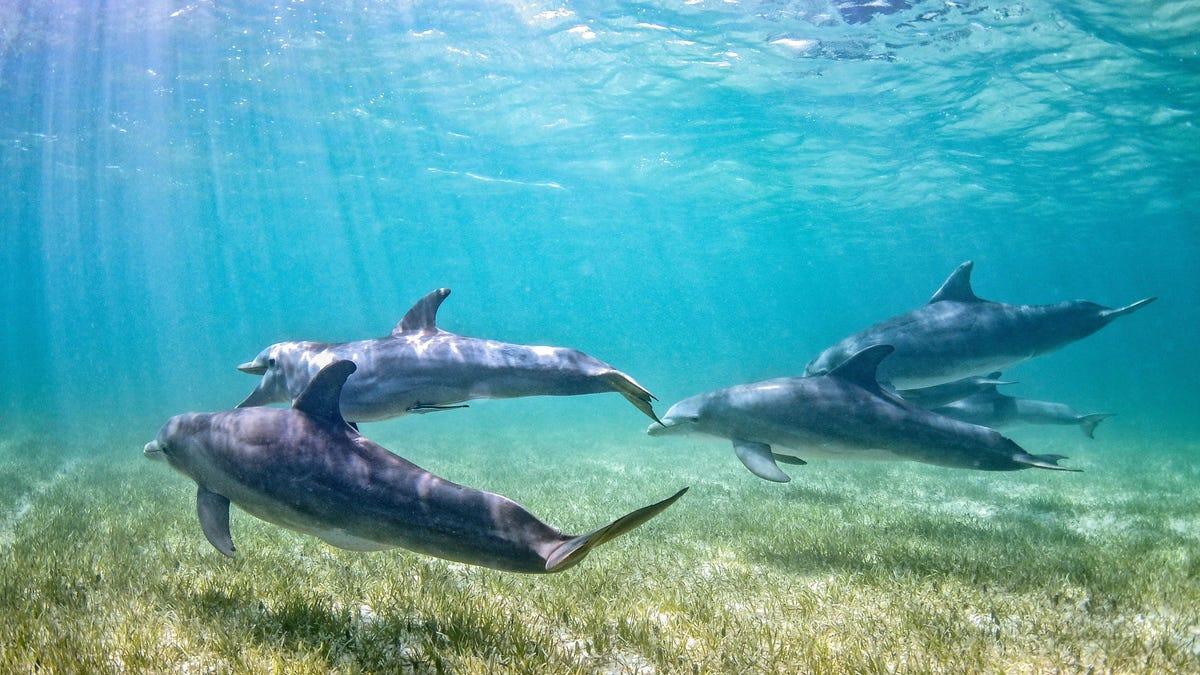Bird flu isn’t just lurking inside cows, new research shows.
Florida scientists have reported the first known case of highly pathogenic H5N1 avian influenza in a common bottlenose dolphin (Tursiops truncatus).
Though the case dates back to 2022, it’s the latest indication that these flu strains can potentially infect a wide variety of mammals.
There have been sightings of highly pathogenic avian influenza (HPAI) in other marine mammals lately, such as harbor seals and other species of dolphins.
Strains of bird flu are classified as highly pathogenic when they cause severe illness and deaths in wild birds, so it’s not necessarily a given that they will be as dangerous to other animals they infect.
The current outbreaks of H5N1 bird flu in cows, for instance, have caused generally mild illness to date.
But strains belonging to this particular lineage of H5N1 (2.3.4.4b) have been deadly to marine mammals.
The researchers are continuing to investigate the case, hoping to pinpoint the origins of the dolphin’s infection and to better understand the potential for bird flu strains to successfully jump the species barrier to these marine mammals.
It turns out that bird flu isn’t limited to cows. The first documented case of highly pathogenic H5N1 avian influenza in a common bottlenose dolphin (Tursiops truncatus) has been reported by scientists in Florida. The case is from 2022, but it’s the most recent proof that these flu strains may potentially infect a range of mammals.
Communication Biology, a journal published by Nature, released the report on Friday. The paper states that the flu-infected dolphin was discovered for the first time on March 29, 2022. Around Horseshoe Beach in North Florida, there was a dolphin that looked to be in obvious distress, according to researchers with the University of Florida’s Marine Animal Rescue Program. But the dolphin was already dead when they got there. Next, the body was wrapped in ice and brought to the university the next day to undergo an autopsy.
Upon post-mortem examination, the dolphin’s meninges (the membrane layers that encase the brain and spinal cord) and brain showed signs of inflammation and poor health. The results of the dolphin’s tests for other prevalent infectious causes of brain inflammation were negative, which led the researchers to broaden their investigation. They made the decision to screen for it because they were aware that highly pathogenic strains of avian influenza can cause neuroinflammation in wild birds, that there have been multiple bird die-offs linked to the virus recently in the area, and that outbreaks of the virus have recently affected other populations of marine mammals. The dolphin’s brain and lungs tested positive for H5N1, according to tests.
Recently, reports of highly pathogenic avian influenza (HPAI) in other marine mammals, including harbor seals and other dolphin species, have been made. Nevertheless, this is the first case of any cetacean—dolphins and whales—reported in North American waters, and the first case reported involving a common bottlenose dolphin.
It’s not a given that bird flu strains will be as dangerous to other animals they infect because they are labeled as highly pathogenic when they cause serious illness and mortality in wild birds. For example, the H5N1 bird flu outbreaks that are currently affecting cows have so far only resulted in moderate sickness. However, strains from this specific H5N1 lineage (2.3. Marine mammals have been killed by 4.4b).
The authors discovered that the strain in question did not seem to undergo known genetic alterations that would facilitate infection and transmission among mammals. Unfortunately, flu viruses can mutate quickly, which means that certain strains may adapt and acquire the necessary mutations to become much more dangerous to mammals on land and in the water.
Apart from the potential risk to human health, the authors stated that the effects of A(H5N1) viruses adapting for increased replication in dolphins and other cetacea could be disastrous for these populations.
In order to better understand the possibility that bird flu strains could successfully cross the species barrier to infect these marine mammals, researchers are keeping an eye on the case in an effort to identify the source of the dolphin’s infection.




